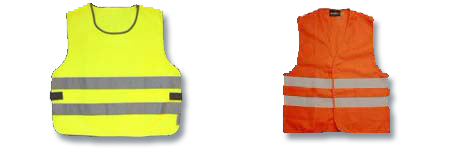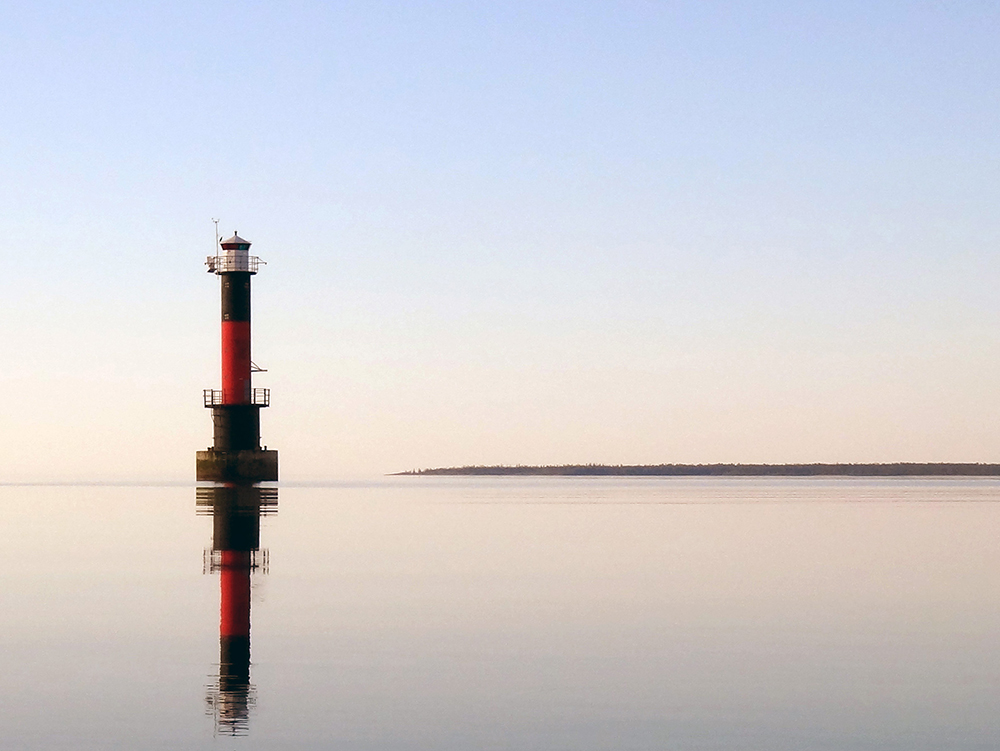Your Safety
Our personal safety is something we often give a thought in planning a paddling tour. Whether it is a normal tour or a long tour. There are quit a few assisting gearss that can be of help if an accident happens. We choose a kayak with greatest care and clothing we like with the desired functions we wish. There are even other things that have be suitable during the tour we have in mind.
The sprayskirt ought to be such as oncoming water doesn't build up a lake between our legs but pours off. The surface must be straight. Every litre of water weighs a kilo and raises the centre of gravity. Not less than 10 litres of water or even more might stay in such a sprayskirt. It shall be tight around cockpit frame and that firm that it doesn't break open by heavy sea during paddling. At the same time it should not fit that firm that it will obstruct evacuating the kayak. A try-out that demands tests. Always check that the evacuating loop or diagonal strap is reachable at the outside of the sprayskirt. Loops hanging down from the sprayskirt tend to end up underneath while a loop trying to stand upright is more reliable.

Some designs have braces. If in water we can normally slide out of the cover if we cannot get it off the cockpit frame. With braces this might be impossible. Especially if we have put it on before jacket and life vest. Even worse might be when cover and jacket are made in one piece. That's when we must know how to roll with a loaded kayak. It is very important that we know our outfit and act right to avoid panicking.
Clothes in clear colours will help others to locate us paddlers on the water. Today there are very thin warning vests we easily can use as top cover.

The neon yellow is the most visible out on the water.
A mobile phone is already looked upon as safety equipment as per our rules and a practical call can give us the right information of the weather forecasts as well before as during paddling.
Through those we will have the latest forecast. We mention a place along the coastal area and will have the latest forecast for that region. Updated every hour. The forecast can be sent by SMS if wished.
Some of us prefer using a WHF radio or ordinary radio and will have the Sea forecast. This is updated 4 times every 24–hours.
If an accident has happened we can alarm and accelerate the needed rescue with a SPOT or PLB. With a SPOT we also can via a map commonly available mark our tour and naval positions as well as write our daily comments (= write a log-book).
A PLB is an emergency transmitter manually activated in case of accident. It will transmit alarm signals and its position to the rescue team. A PLB should be stuck to the life vest. We already wear a life vest and if this is dark we have the warning vest on top of it.
Rescue pontoons are helpful to get our place back in the kayak if we have capsized. There are different makes with different handling. Safely stored on rear deck they must easily be detachable even when in the water and further more easy to blow up even in waves that have caused us to capsize. If they shall be mounted in specific holders even this phase must be easily done. If it is a paddle that makes the outrigger this naturally must be the spare paddle. With the ordinary paddle we have nothing to bring us into safer water with.
Even if the kayak can be equipped with pontoons or we have our own solution to carry us further without delay we shall never empty our margins. Those might be needed to reach a safer area.
Most important of all is however our skill and ability. How good are pontoons if we don't know the moves to get them in position? Exercise gives proficiency. What is the "friend-rescue technique" worth without practice? Or "Re-entry" if we only know they exist? A "Roll" if we cannot do it? High or low paddle support must be in our spinal marrow and made as a reflex if needed. We might avoid a more serious accident by knowing these well.
Extra equipment or skilled company will never compensate our own personal knowledge. Experience is weighing heavily in this matter. Never let the equipment induce you to go on in water you should avoid at the moment. Why go even if your mate wants to? The weakest link should rule and might be the rescue. Here the weakest is not equal to ignorant but more the most prudent. The most prudent who knows his skill and is able to read weather signs right.
If we allow us to be taken by hard weather we must already before know where the backdoor is. Wherever we are. To all the time have this planned increases the safety. In a straining situation we needn't start looking for the safety and avoid a precipitated judgement.
The illusionary goal may never force us to exceed our ability. To foolhardily challenge the forces of sea and nature is not what a capable paddler does. A capable paddler takes the opportunity to rest the body and might find satisfaction in not having to wrestle with peevish waves and strong wind. It is good judgement to in time pinpoint the time to escape from unfriendly water.
— o — o — o —
Hints and comments
Naturally there are more parts in our outfit that ought to be chosen with greatest care.
- Are we face to face to a long tour and forced to put some stuff on deck we have most certainly chosen a too small kayak. The centre of gravity will be moved upward and our own influence by upper part of body ought to be enough. By the time the lot of food decreases and we might not need any stuff on deck. The question is if bad luck or that fatal mistake will wait until then. Despite considering this we might be forced against our wish and knowledge to use the rear deck. It may not be heavy things. A tent or sleeping bag loosely packed in a watertight bag actually could act as a pontoon and stop the kayak to turn upside down. It will rather stay in 90-degree angle. That is if the bag is properly strapped to the kayak and it all must be tested out before.
- Our own fresh water supply stored low in the kayak lower the centre of gravidity and probably most of all in our outfit. That's why it is an advantage to refill as often as possible. A large bottle for the daily used stored on deck will counteract. Stored in the cockpit is best reachable by a tube. In this matter a drinking bag on the back is worse.
- A leaning kayak is tiresome to paddle, as we know. A good behaviour is to check this out before we enter the kayak. Lifting the kayak in the lower side will move our stuff as little as needed despite we have loaded everything that it should not move sideway. We might have to open and check our belongings new position and secure it again.
- A sprayskirt we have chosen and like but have a lope hanging down can be altered into either one more standing up or replaced with a diagonally strap. If we choose the latter alternative we must measure the length of the strap with the cover mounted. It should be firm but not tight. Ready straps are mostly made in two parts with a locker for adjustments. If the locker opens unintentionally it must be secured.
- A towing line or a long line is very useful to different things and is part of the normal safety equipment together with pump and spare paddle. These are things that should be reachable from the cockpit. The line could be used as drying line for clothes or as painter at unknown tide.
- A bright torch could attract extra attention even during daytime. A distress-signal rocket has better function if an accident happens, but should never be used elsewhere than in just an emergency situation.
- Regardless what equipment we have chosen we must know and be able to handle all parts of it so we don't get surprised or stopped. A spray skirt with braces for example could just by being fixed to our body help us to free the cover from the cockpit just by pressing us out of it, but should unconditionally be tried out. A spray skirt with a loop demand that we all time mount it with the loop on the outside. Dare we count on doing right all time? Practised manipulations change in respect of changing our outfit to maintain our safety.
As understood it is all the time our skill and knowledge about our outfit that is conclusive. We all hope to avoid using it, but must all the time be prepared. Let us never be off our guard.
Jim Danielsson tells us following in our page "About HBB":
- Several paddlers have aborted their attempts when overwhelmed by harder weather condition than expected and to avoid falling outside their own abilities. Their wise decisions have been well grounded. Some have started out alone only to learn that they cannot cope with solitude over such a long spell of time.
further more:
- Regardless of which mode of transport is chosen, every paddler should of course take pride in staying within their own safety zones. Any paddler who completes the tour will get to know own real qualities and will for ever be rewarded by a unique experience, an experience earned by using own muscle-power while travelling as an humble guest in the vast kingdom of sea and nature.
The quotation below from the page Rules could not be emphasized enough:
AS ALWAYS: THE RESPONSIBILITY IS YOURS.

